If we think of the Italian National Soccer Team we think of their World Cup triumphs, a complete success in the most powerful competitions on the planet with 4 victories and in the Eurocup, we think of their great legends that are known to all, we think of their indisputable and elegant blue shirt, we think of their controversial catenaccio football, we think that they always reach the final stages of the championships, we think of their fervent fans. We think about all this and it is what we are going to talk about in this article. We will take a journey through the history of this team that has brought so many joys to its fans and so many headaches to its rivals in major competitions.
The beginnings of the Italian national soccer team date back to 1910 when they beat France with a forceful 6-2. At the level of international championships he played in the Olympic Games of 1920, 1924 and 1928. In these last Olympics he achieved his best classification reaching the semifinals. From these beginnings the Azzurri team as the Italian team is known will have a long history in which football and political events will be interconnected. In the 1930s, he achieved his first great triumph by winning the 1934 World Cup, when fascism was already imperversing for Italy and Mussolini was in power. They repeated the victory in the 1938 World Cups and the 1936 Olympic Games. The architect of all these triumphs is an outstanding coach; Vittorio Pozzo.
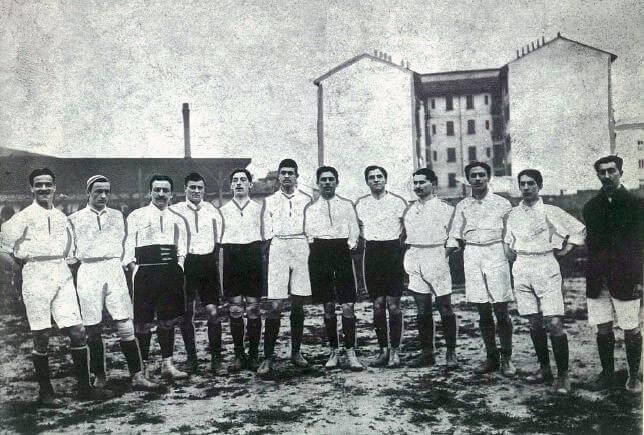
Italian national football team in 1910, friendly game Italy-France
After the Second World War, the football void produced by that contest, years of political upheaval, the creation of the Italian Republic in 1946 and some 50 years deserted by titles in the field of king sport, lead us to about 60 years where the Squadra Azzurra wakes up and begins again to be the team that was already shown in the 30s.
To remember the performances of the following decades, we review his victories, and the placements in the various tournaments in which he participated: World Championships, European Championships and Olympics.
SIGNIFICANT RESULTS OF THE ITALIAN NATIONAL FOOTBALL TEAM IN THE WORLD CUP, EUROPEAN CHAMPIONSHIPS AND OLYMPIC GAMES:
WORLD CUP:
World Cup 1934 in Italy: champion
World Cup 1938 in France: champion
Mexico '70 World Cup: second place
Argentina World Cup '78: fourth place
World Cup Spain '82: champion
World Cup Italy '90: third place
USA '94 World Cup: second place
France '98 World Cup: quarter-finals
World Cup 2002 South Korea Japan: round of 16
Germany World Cup 2006: champion
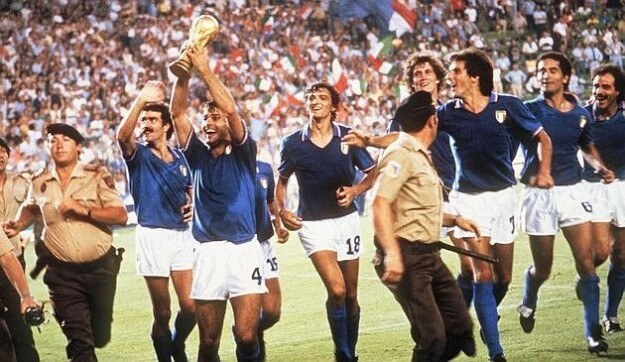
Italy wins the 1982 World Cup in Spain
EUROPEAN CHAMPIONSHIPS:
Euro 1968 in Italy: champion
Euro 80 in Italy: semi-finalist
Euro '88 in Germany: semi-finalist
Euro 2000 Belgium and the Netherlands: second place
Euro 2008 Austria and Switzerland: quarter-finals
Euro 2012 Cup Poland and Ukraine 2012: second place
Euro 2016 in France: quarter-finals
OLYMPIC GAMES:
1920 Olympics in Antwerp: quarter-finals
1924 Olympic Games in Paris: quarter-finals
1928 Olympics in Amsterdam: bronze medal
1936 Olympic Games in Berlin: gold medal
Starting in 1948, the Olympics football competitions were played by non-professional players of amateur categories.
LEGENDS OF ITALIAN FOOTBALL
The Italian footballers who made history
Who are the best Italian footballers in history? Who are the legends of Italian football that remain in the mind of the fans?
Let's review them together:
Gigi Riva, born in 1944, was a legendary forward player of the 60s. His great feat is that, being so great and considered one of the best forwards of the second half of the 20th century, he remained throughout his career at the club that saw it grow; Cagliari Calcio, specifically from 1962 to 1976, a Sardinian Club that is not among the greats of the Italian league. With Gigi Riva this Club took their only Scudetto, their only league. With this team Riva won the title of top scorer in the Italian Serie A in three seasons; those of 1966/1967, 68/69 and 69/70. Already in the Italian national footbal team he won the only Euro Cup that Italy has won, the 1968 Italian Euro Cup scoring a goal in the final and participated in the 1970 World Cup in Mexico where he became a global star for his game and his goals although in the final the italian team could not take the victory as they had to face the most outstanding Brazil in history in the final, that of Pelé, Rivelino and Carlos Alberto. In fact, he holds the record for best scorer in the history of the Italian team with 32 goals in 42 games. He was nicknamed, Rombo di Tuono, the Fury of Thunder, for the shots that he kicked with his left foot, being one of the great experts with the left foot and in the forceful diagonals.
Gianni Rivera, born in 1943, in Alessandria, is one of the great Italian football players. He started his career at the club in his hometown where he played two seasons, but spent his entire career at AC Milan, from 1963 to 1979 where he contributed to the team winning two Champions League Leagues in 1963 and in 1969. After this second Champion League triumph, Gianni Rivera took the Ballon d'Or in 1969. A Ballon d'Or with a strong symbolic charge for being the first Italian player to obtain this distinction. For this reason, he is considered one of the best players in the history of Italian soccer. In the national team, like his teammate Gigi Riva, he participated in the triumph of the Italian team in the 1968 Euro Cup that was played in Italy, as well as in the 1970 World Cup in Mexico, where he scored the winning goal in the semifinals in the extra-time of the match that is considered one of the most outstanding matches of the mother of global football competitions. That game against Germany, the so-called match of the century. The Golden Boy, one of the best 10 in history, was a great playmaker, he had eyes everywhere, his game was slow, rational and elegant but for that reason, he was a very imaginative player. Milan coach Nereo Rocco said that with him you could turn any situation, that he was a genius.
Paolo Rossi, born in 1956, the Italian striker of the 70s and 80s par excellence. Unlike his previous colleagues, he was an expert in the Italian league for having played on many different teams; Como, Vicenza, Perugia, Juventus, Milan and Verona. But it was at Juventus where he developed his full football potential from 1981 to 1985 by winning two Serie A Scudettos, one League Cup and a Champion League among other titles. As a Juventus player, he won the Ballon d'Or in 1982. That year is the year of his greatest successes, the year of the 1982 World Cup in Spain that Italy won. We have to highlight the three goals scored against the Brazilian team in the second phase of the World Cup and the first goal of the final against Federal Germany. He would take the Golden Boot as the top scorer in the competition with 6 goals. He also participated at the age of 21 in the Argentina 1978 World Cup where Italy was in fourth place thanks to, among others, 3 goals from our star. He also participated in the 1986 World Cup in Mexico, that is, in the 70s and 80s he was a super-known international player outside his native Italy. We will forget the scandal of the sports betting Totonero for which he was sanctioned and had to remain inactive for two seasons. A very skillful player, fast, always well positioned, very attentive to any mistake of his opponents in the area, and with great success in his shots, qualities of a crack forward of his time.
Paolo Maldini, born in 1968, undoubtedly the best defensive left-back in Italian football history. This AC Milan star player spent his entire career with the Rossoneri team - from 1985 to 2009 - where he is considered a legend for the Milan fans. With the nickname of Il Capitano, he is the player with the most matches played in the history of the club. He came from caste since his father was a historical player of the Club and Paolo's sons play in the lower categories of Milan nowadays. In Milan, he has won everything, among the other: five Champions League championships, the first in 1989 and 1990 under the leadership of Sacchi and the last in 2007 and seven Scudetto's. In the National Team, he played for the first time in 1988 and was captain for 76 of the 126 matches in which he wore the Azzurri shirt. World Cups of 1990, 1994, 1998 and 2002 but he could not fulfill his dream of winning a World Cup, the most precious award of every footballer who aspires to represent his country in victory. with the title of champion in a European Championship of the three in which he participated; Euro 1988, Euro 1996 and Euro 2000. Of all these participations we highlight the second place in the 1994 World Cup in the United States where Italy reached the final against Brazil by Romario and Bebeto but lost on penalties. In the Euro Cup in Belgium and the Netherlands they also qualified to play the final against the France of Zidane, Deschamps and Thierry Henry but the French won 2-1. Among the many distinctions, we highlight its inclusion in the ideal Eleven Starting team of World Soccer magazine. And finally AC Milan removed number 3 from the shirtsin his honor. As a left-back he appropriated his entire lane, with professionalism and elegance, his security was such that it also allowed him to go on the attack. His game, strength and personality gave a touch of legend to a position that in football does not usually have much publicity. Together with Costacurta, Baresi and Tassotti created a defense that is already historical and insurmountable.
Roberto Baggio, born in 1967 is probably the best 10, the playmaker in the history of Italian football. Divin Codino, the divine ponytail as it was called, played with many Italian teams starting in 1983 at Vicenza, then going through Fiorentina five seasons, at Juventus where he played five years and won the Serie A title in 1995, at Milan where he spent two seasons where he contributed to winning the Seria A, at Bologna one season, and at Inter where he stayed for two other seasons, ending his career in 2004 at Brescia after staying four seasons. In this team, they have removed the shirt with the number 10 in his honor. As for his participation in World Cups, the Italian team could count on his participation in the 1990 World Cups, the 1994 team together with Maldini where the Italian team was runner-up, he missed the last penalty in the final against Brazil, and in the 1998 World Cup. Like his compatriot Maldini, he could not win a World Cup or European Championship. Still, he scored 27 goals in 56 games, being the fourth-best goal scorer in Italian football. His golden year was 1993 where he won the UEFA Europa League and the Ballon d'Or in 1993 with Juventus. He was the star of the national team and for this, he is best known in the '90s football. He was a versatile player, we won't remember him for his titles but for his bright moments, such as the goal against Czechoslovakia in the 1990 World Cup, a dribble race against his rivals for fifty-meter. His speed, his dribbles, his control with the ball stuck to his feet, his genius blows, his anarchic game on the field with his changes of pace or idea of play, but disciplined in training, an intuitive, poetic football that we miss a lot right now.
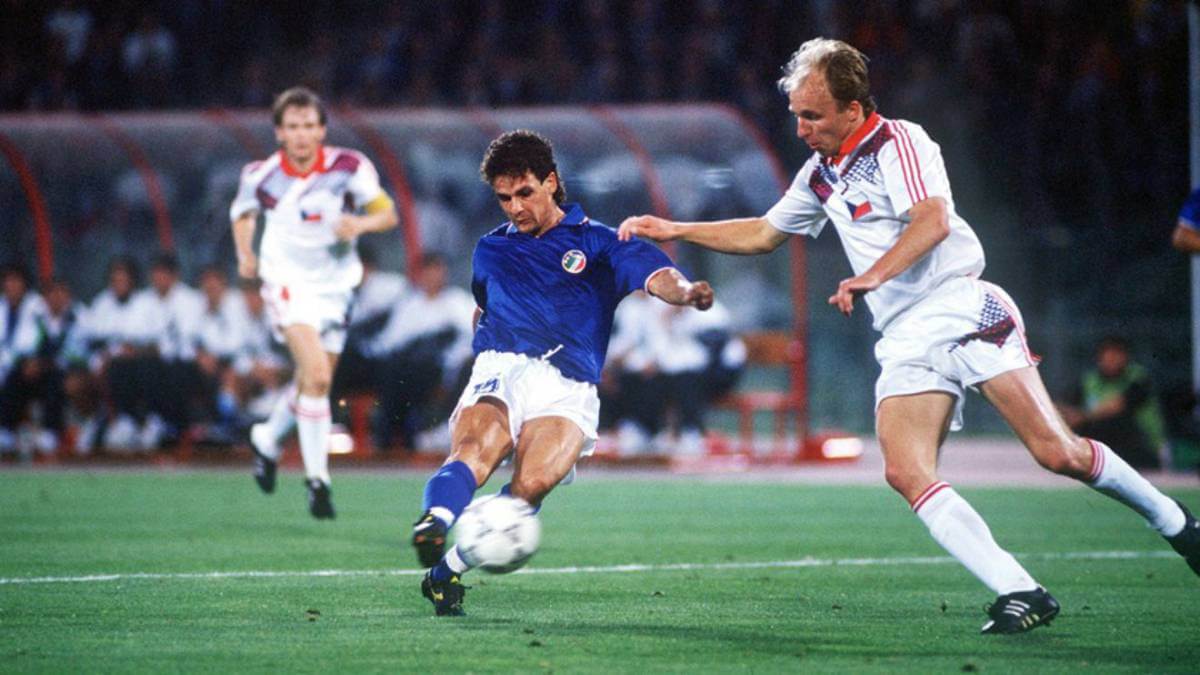
Italia '90: Baggio's Czechoslovakia goal
The Italian national team retro shirts are jerseys of great elegance. We invite you to visit the section of classic shirts of Italy on Retrofootball®. You can take a tour of the historical jerseys of Italy with its characteristic blue color of the House of Savoy, the Royal House that participated in the unification of the Italian nation, and the emblem of the Italian flag in the heart.
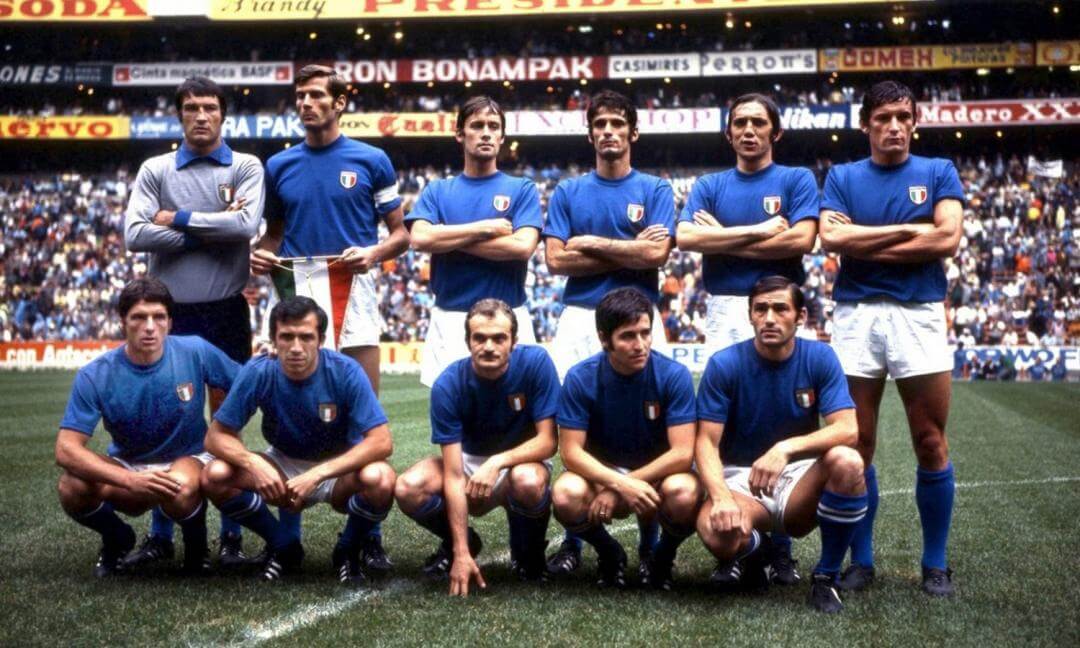
Italian national team at Mexico 1970 World Cup
You can start with the vintage shirt of Italy 1968-1970 when the Italian team won the 1968 European championship, continuing with the away shirt of the 1982 World Cup, a white polo shirt with the colors of the Italian flag on the neck and short sleeves or Italy's retro shirt at the 1990 World Cup. Each shirt brings back the legends that have worn them in international competitions, honoring it and contributing to the myth of the Azzurri.
Timeless shirts that will never go out of style to relive the colors of the history of Italian football on your skin.
 Retrofootball
Retrofootball  Belgium
Belgium  France
France  Germany
Germany  Italy
Italy  Portugal
Portugal  Spain
Spain  Switzerland
Switzerland  United Kingdom
United Kingdom  other countries
other countries  Retrorugby
Retrorugby 
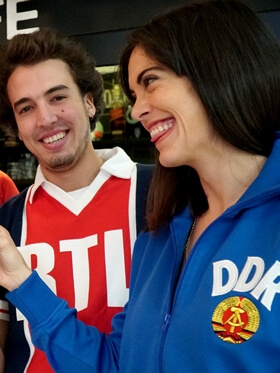
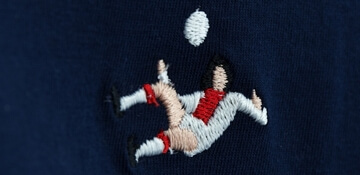




Post Comments